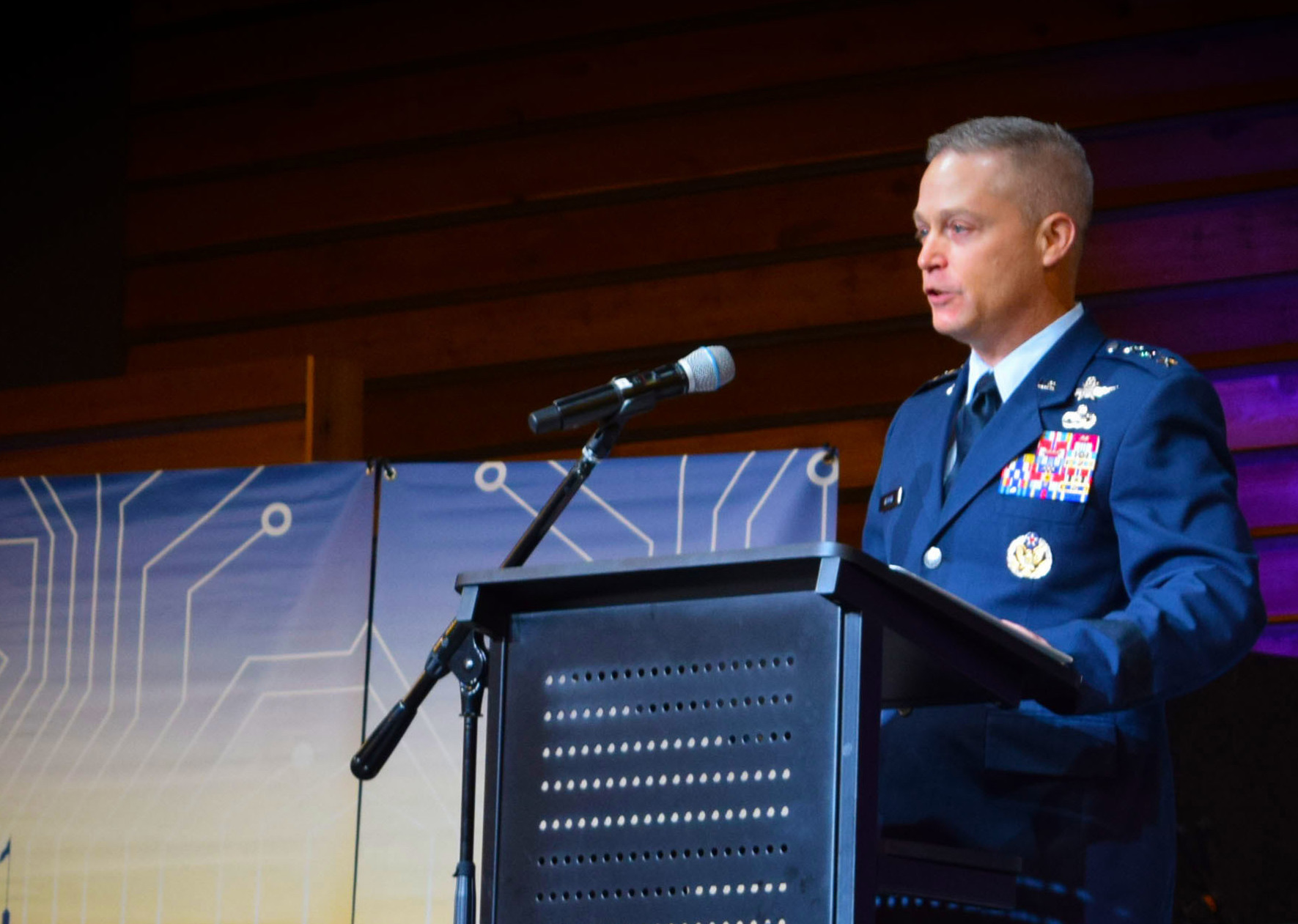
Artificial intelligence is and will remain an enabler not a replacement for humans in the work of Cyber Command and the National Security Agency, the nominee to head both told the Senate Armed Services Committee Thursday.
“A human will be interfacing with that machine and that data,” Air Force Lt. Gen. Timothy Haugh told the panel.
Both Cyber Command and the NSA have approached using artificial intelligence and machine learning “in a very methodical way” including identifying where the data came from and subjecting it to an analyst’s review. “We’re building a roadmap” on how to use A.I. on a greater scale, he said.
Haugh, currently serving as CYBERCOM’s deputy commander, said the United States leads China and Russia in using artificial intelligence. He said several times the command operates within congressional, and Pentagon-set standards and regulations on AI while the competitors have no such protections.
For the People’s Republic of China, using A.I., “is about dominating a population.” He used Beijing’s extensive use of facial recognition and the creation of the “Great Firewall” to control the internet domestically as examples.
The U.S. continues to monitor “how our adversaries use” A.I. to see how the threat evolves.
When asked whether the arrangement that the director of the NSA also serves as the senior officer at Cyber Command, Haugh said, “We can move with speed and agility today. I would not change that.”
If confirmed, Haugh said his top NSA priorities would be improving readiness and growing the acquisition force. At Cyber Command, the emphasis would be on recruiting and retaining talent as it now faces a workforce nearing retirement age.
He said, when the Fiscal Year 2024 National Defense Authorization Act and defense appropriations bill are signed into law, Cyber Command will operate similarly to Special Forces Command with its own budget and acquisition authority and responsibility for training.
Eighty percent of the command is in the military.
“We’re setting that baseline training” now. Controlling advanced training “will allow us to scale faster.”
Haugh added, “the services are doing assessments at recruiting and in basic training” for enlistees with cyber skills that would be useful to the command.
Today, Cyber Command has 30 to 50-member teams in each of the combatant command headquarters “so we are integrated” and can support them offensively and defensively, he said. Haugh said this is essential to the command’s “Defend Forward” strategy and persistent engagement with potential adversaries. It also works closely with NSA’s work domestically with other governmental agencies and critically important industries in strengthening their networks against attack and building resilience when hit.
He said that means “identifying what infrastructure [in the United States] is critical” to DoD and the nation that would be called upon to support a regional commander in a crisis. ”We should be as transparent as can be” in collaborating with industry and other agencies on identifying threats and actions to take.
Haugh cited Ukraine’s work with the United States, particularly in building resilience, as frustrating Russian attacks on its armed forces’ networks and critical infrastructure.
Following reports on Chinese malware attacks on Guam’s infrastructure and escalating cyber pressure on Taiwan, Haugh added working through the regional commands with allies and partners in improving their network security “is an area that has really expanded.” He specifically mentioned Indo-Pacific Command’s wanting “us to look at other countries – Singapore, Thailand and the Philippines.”
Haugh said the Chinese will continue targeting American networks to steal intellectual property “to create economic advantage: and “buy down U.S. military advantage” as they have done for decades.





